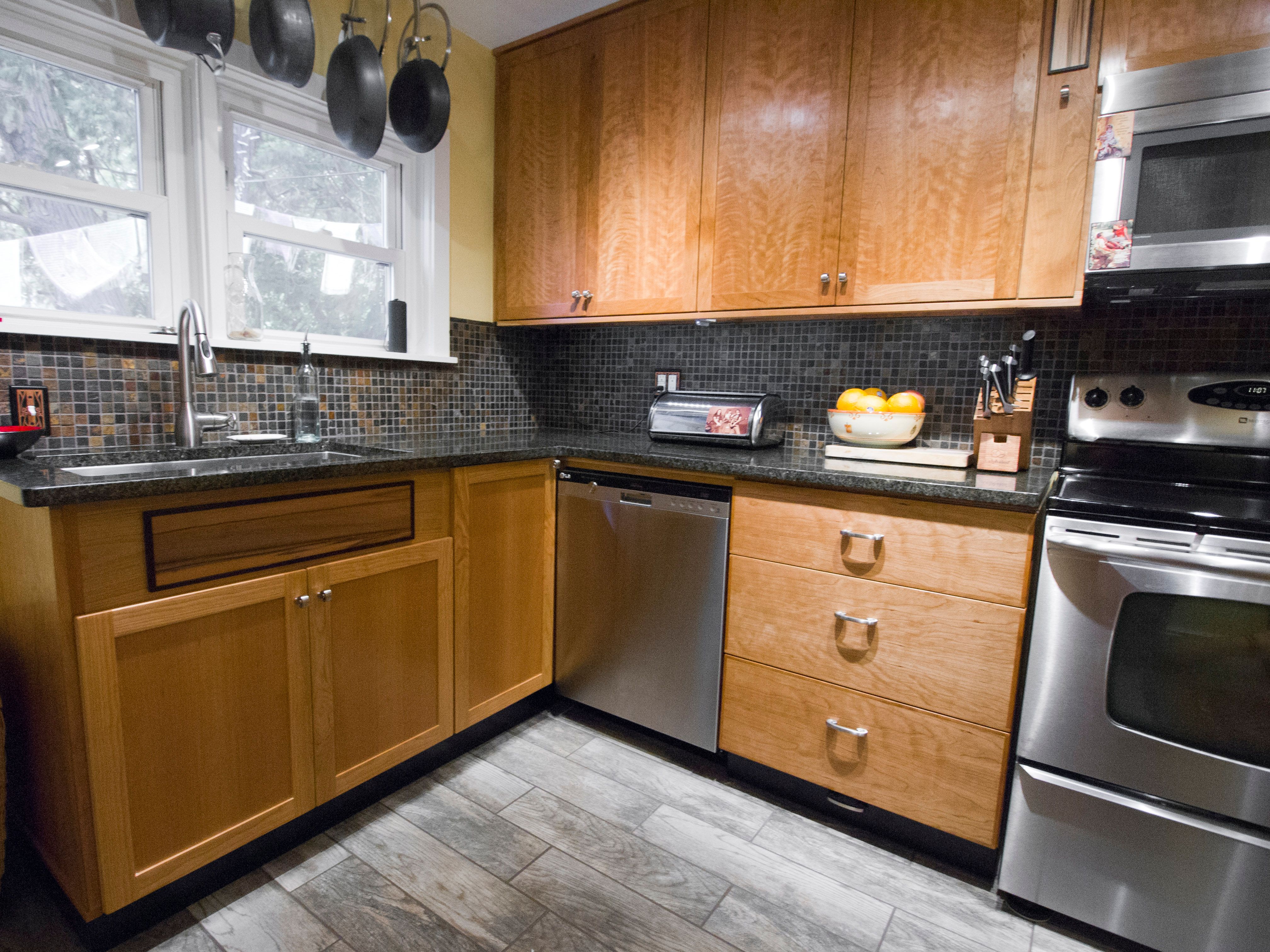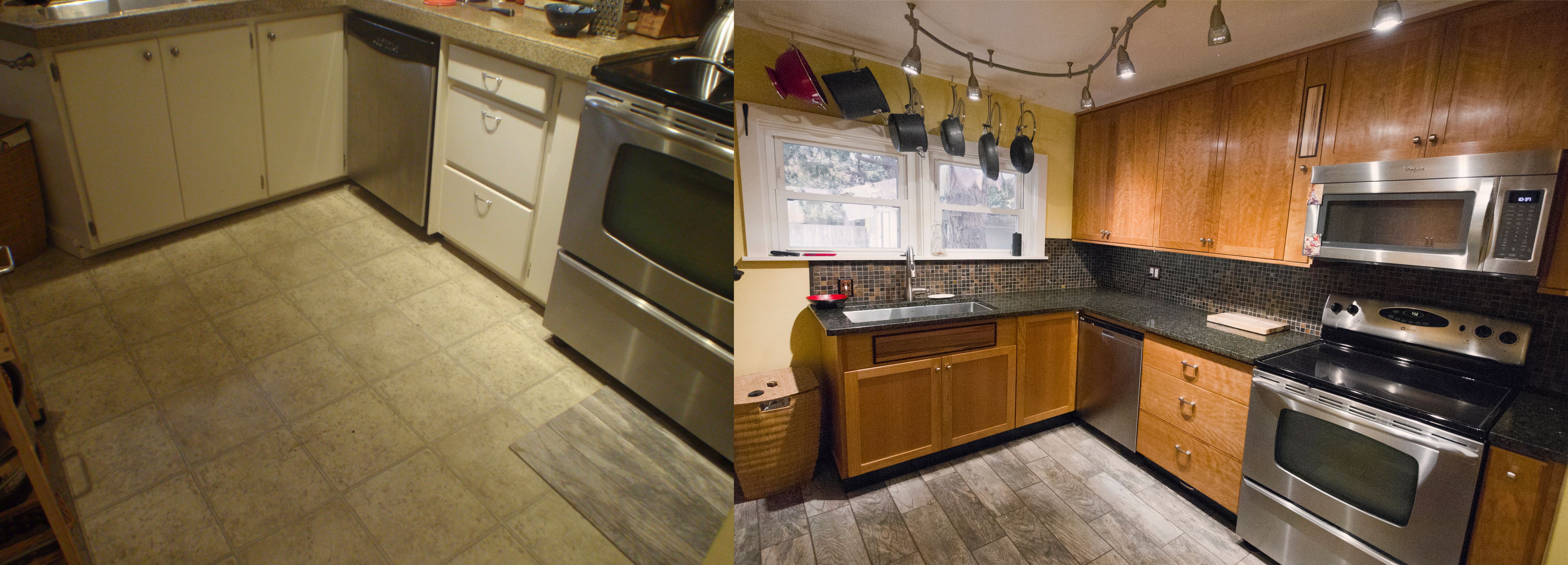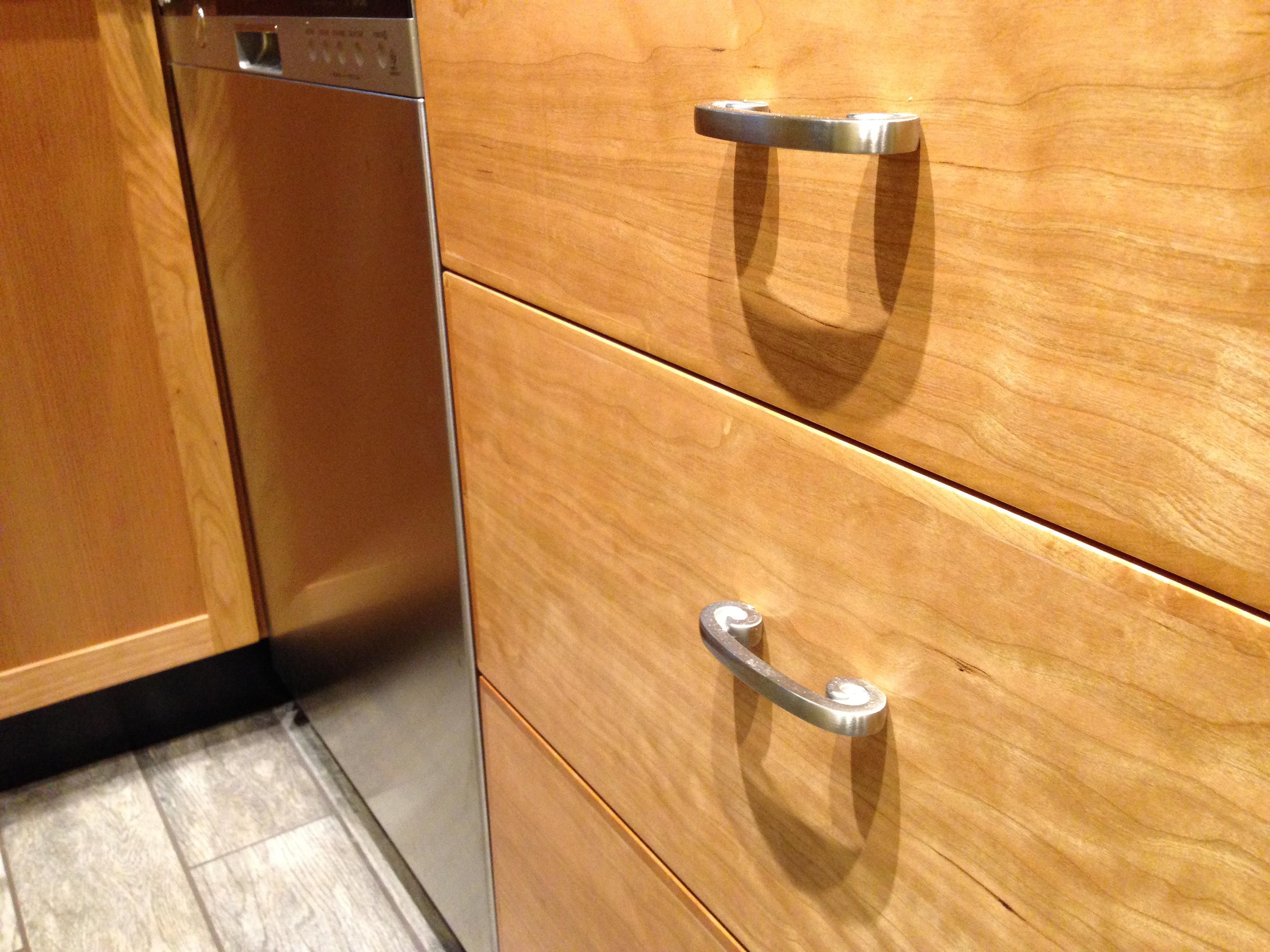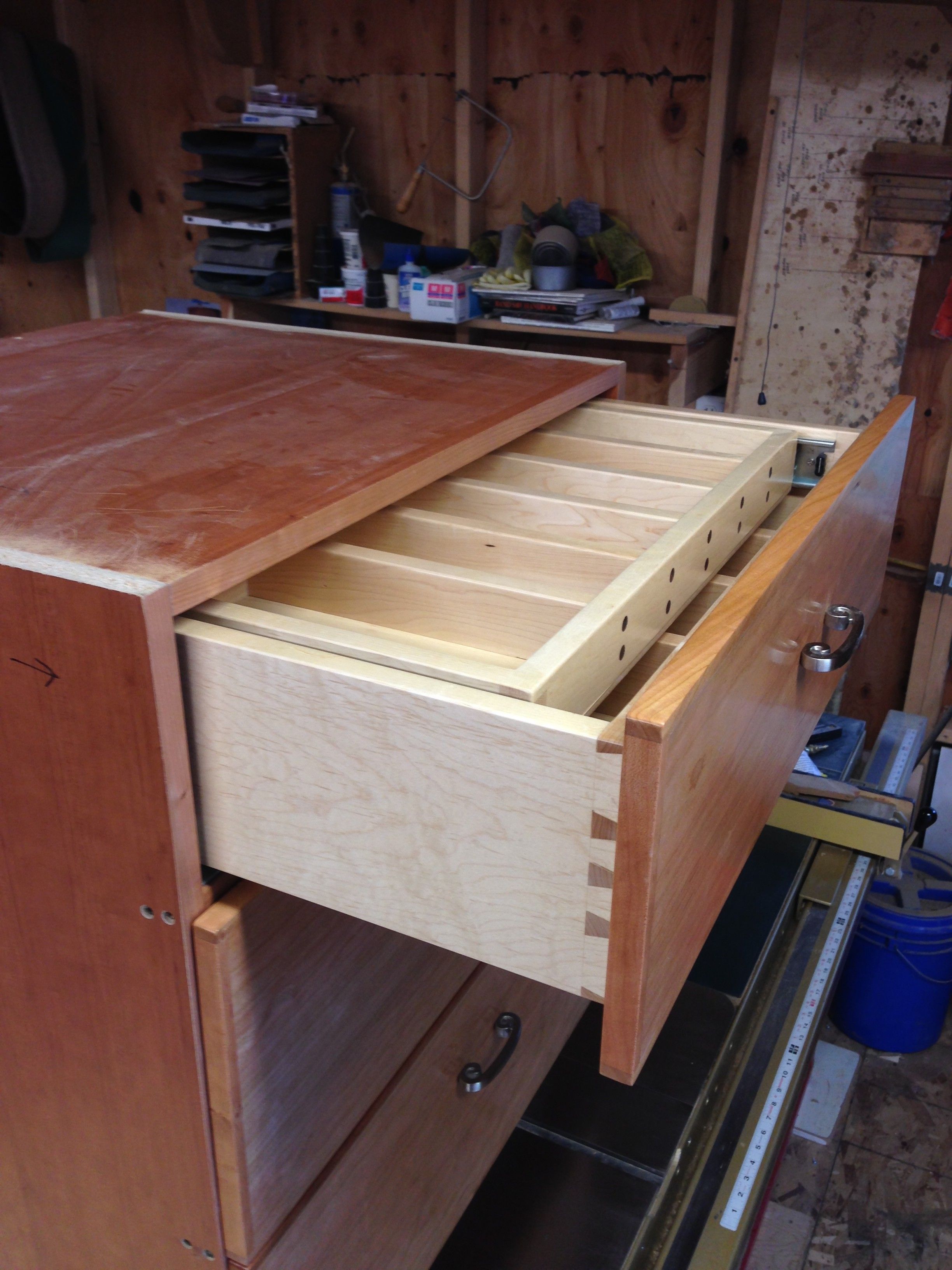
The small 1940’s era kitchen was dated, worn, and built with inferioir products. The old cabinets had been created on site, with sticks of scrap wood and nails. The cabinet doors and drawers had been updated 20 years ago with painted MDF. The floor was simply a roll of vinyl over particle board.
My intent was to bring it up to code, make it energey efficient, water-reistsant, warm and beautiful – with lots of hand work, matched wood grain, maximal use of space, and to replace the floor wth porcelain tile.
Once I removed the old cabinets, the floor was stripped to the joists and a double layer of subfloor was installed. On top of this I poured a liquid layer of self-leveling cement to counter the lack of level in the floor. On top of that I layed backerboard and then painted all of the surfaces under the cabinets and appliances with 3 coats of RedGuard waterproof membraine (like a shower build). The 24″ tile would then be layed after the cabinets were installed.
Just like the floor and all of the electrical, I built all of the cabinets myself. All of the door rails and stiles are grain-matched from solid cherry. The dovetails in all of the drawers are hand cut with saw and chisel. The accent pieces are from spalted pear and spalted maple (scraps from the trashbin of James Krenov, and rescued by a friend at the College of the Redwoods). The cabinets are cleat -mounted onto the walls, and not just ‘hung’. I finished all of the cabinets with four coats of a hand-applied oil finish, and then hand waxed. The tolerances are all tight and we now have a functional quiet kithen that will stand the test of time.
I used every inch of space for storage – toekick drawers, pull-out spice racks, built-in pockets for wine bottles, etc. The kitchen is small, but so efficient now. The LED lighting under the counters and in the track lights provide wonderful warm light where you need it. All of the Blum under-drawer soft close slides let the dovetails shine, the new high-efficiancy appliances are quiet and use much less water/electricity, and the cherry just continues to darken with age – bringing out more grain, figure, and warmth.
To be fair, this project took me about nine months to complete, as I have a full time job in a local emergency room as a registered nurse.



























